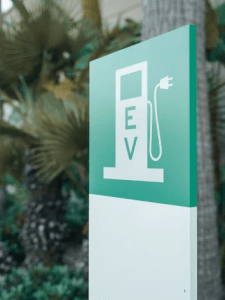Electrification, Legislation + Regulation
July 16, 2025


The passage of the “One Big Beautiful Bill” (OBBB) will significantly impact the landscape for electric vehicle (EV) charging infrastructure. Here’s a breakdown of the key impacts:
Reduced Incentives:
The OBBB eliminates the federal tax credit for new EVs ($7,500) and used EVs ($4,000), potentially making EVs less affordable for consumers and impacting adoption rates. Federal incentives for EV charging infrastructure development are largely eliminated, which may hinder the expansion of charging networks. The Alternative Fuel Infrastructure Tax Credit (Section 30C), which supports EV and hydrogen fueling stations, will expire on June 30, 2026. Previously planned and approved federal funding for EV charging stations is being reviewed, potentially placing projects in jeopardy and delaying deployment.
Potential Slowdown in Deployment:
The reduction in incentives may slow down the pace of EV charger installations across the country. This could exacerbate existing challenges like range anxiety for potential EV buyers, particularly impacting non-Tesla owners who rely on public charging infrastructure more heavily. A study cited by CarbonCredits.com indicates that the slowdown in clean electricity growth under OBBB, coupled with rising demand from EVs and data centers, might lead to increased reliance on fossil fuels, potentially offsetting environmental benefits.
Challenges for Domestic Manufacturing and Buy America Requirements:
The OBBB cuts subsidies for battery manufacturing, which could raise costs for EV makers and potentially slow down domestic EV production. While there was a temporary waiver for Buy America requirements for EV chargers, allowing for final assembly in the US and phasing in domestic content requirements, this waiver began phasing out in July 2024. The stricter Buy America requirements could pose a challenge for manufacturers and potentially slow down the deployment of charging stations if meeting these requirements proves difficult or costly.
Ongoing Funding and Opportunities:
Despite the federal changes, some state and local programs, such as Tennessee’s Fast Charge TN program, continue to make progress on EV charger deployment using alternative funding sources like the Volkswagen Diesel Settlement Environmental Mitigation Trust. Cities and community partners may still be able to access some tax credits under previous rules if projects began construction before the end of 2025, and non-taxable entities can utilize elective pay mechanisms to claim credit value as cash, according to Sustainability Magazine.
The OBBB presents challenges for the EV charging landscape. Although while federal incentives are reduced, some avenues for funding and development remain, increasing the importance of state and local initiatives in supporting EV adoption and infrastructure expansion.
More information is available here.
Image: Pexels.com

